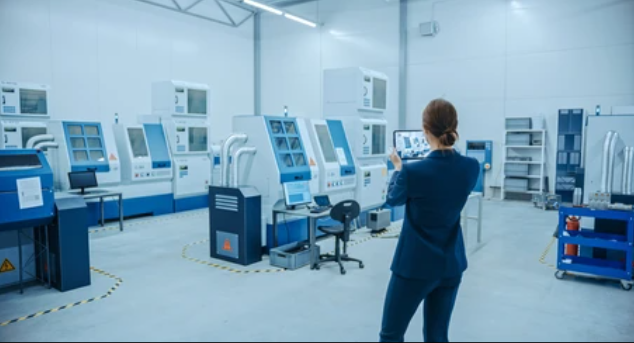Will AI Replace Interior Designers?

“Success in creating AI would be the biggest event in human history. Unfortunately, it might also be the last, unless we learn how to avoid the risks.” – Stephen Hawking
Introduction
As Artificial Intelligence (AI) has made significant strides in a wide range of industries, it has revolutionised the way tasks are performed in many different ways. It goes without saying that the field of interior design is no different. The advancements in AI technology have led many to wonder if AI will eventually replace human interior designers as a result of advancements in AI technology. It is the purpose of this article to examine the potential impact of Artificial Intelligence on the interior design profession, taking into account both the advantages as well as limitations of AI in this creative field.
The Rise of AI in Interior Design
The interior design industry has already been impacted by the use of artificial intelligence. A number of tools and software that are powered by AI are now being used by designers to automate and streamline certain aspects of their work. A powerful AI algorithm, known as a machine learning algorithm, is capable of analysing vast amounts of data in order to provide valuable insights and recommendations, such as colour palettes, furniture arrangements, and design trends. An algorithm that learns from the preferences of the user can even provide suggestions that are tailored to the preferences of the user. Additionally, virtual reality (VR) and augmented reality (AR) technologies offer clients a unique opportunity to experience and visualise the design concepts before they are actually implemented as a result of these technologies.
Advantages of AI in Interior Design
AI can be a valuable and powerful tool for interior designers to become more efficient and effective. The following are areas where AI can replace some human tasks.
- Efficiency and Time-Saving: The use of artificial intelligence can assist designers in the generation of design proposals, the creation of 3D models, and the automation of repetitive tasks, enabling them to focus on more creative aspects of a project rather than on repetitive aspects. It is therefore possible to increase productivity and reduce project time by streamlining processes.
- Data-Driven Design: It is possible to use artificial intelligence algorithms to analyse large amounts of data, including customer preferences, market trends, and historical data, for the purpose of making valuable design decisions. As a result of this data-driven approach, designers will be able to make informed decisions, optimise user experiences, and enhance the quality of their designs.
- Personalization and Customization: AI can generate personalised design recommendations based on user preferences. With machine learning, designers can create customised interiors that fit each client’s unique preferences and needs.
- Data Analysis and Insights: Data like design trends, colour palettes, and customer preferences can be processed by AI algorithms. Artificial intelligence can provide designers with valuable insights, so they can make informed decisions and design products that fit current trends.
- Automation and Streamlining: Interior design can be automated with AI-powered tools, like generating design proposals and creating 3D models.By automating this process, designers can focus on more creative aspects of their work and be more productive.
- Visualization Technologies: Using AI and VR/AR, clients can visualise and experience designs before they are implemented. With immersive technologies, clients can get a more realistic and interactive representation of the proposed designs.
Limitations of AI in Interior Design
The following are the areas where AI can not replace humans.
- Human Touch: Creative fields like interior design require an understanding of emotions, aesthetics, and cultural nuances. The AI can provide data-driven insights, but may struggle to replicate human design thinking’s intuitive and emotional aspects.
- Subjectivity and Creativity: The process of designing is subjective, and it often takes creativity and intuition. It might be hard for AI algorithms to capture human creativity and produce truly innovative designs.
- Client Interaction and Communication: The key to interior design is building rapport and understanding your clients’ needs. Despite the fact that AI can help with certain aspects of client communication, it may lack empathy and interpersonal skills to build strong relationships with clients.
The Future of Interior Design: Collaboration between AI and Interior Designers
Instead of replacing interior designers, AI could serve as a powerful tool that complements them. Designers and AI systems will collaborate to create the future of interior design. AI can help designers streamline workflows, gather insights, and enhance creative processes. It’s possible to make the industry more efficient, create personalised designs, and enhance user experiences by combining AI algorithms with human intuition and creativity.
Conclusion
AI is not going to completely replace human designers, but it is transforming the landscape. AI’s strengths, like data analysis, efficiency, and personalization, can be huge for the industry. The importance of human interaction in creating distinctive and emotionally impactful design solutions cannot be overstated. The subjective and creative nature of design makes human designers essential. It is predicted that AI will enable interior designers to create more impactful, innovative, and personalised spaces in the future than they have done in the past.
Read https://jdinstituteoffashiontechnology.com/interior-design-tips-for-beginners-to-start/ to learn more about interior design.






